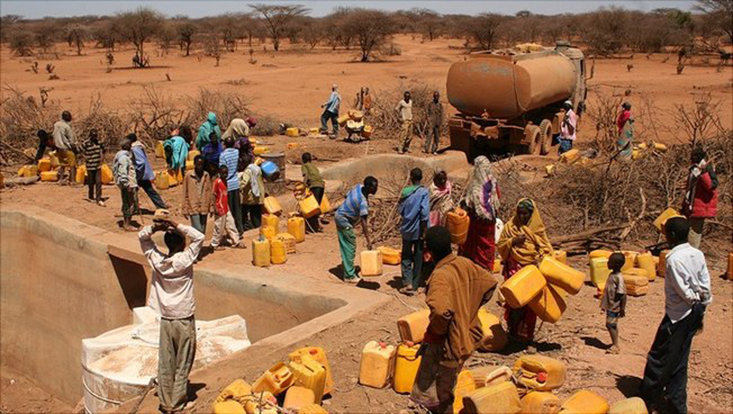Climate change increases the risk of armed conflicts
13 June 2019, by CEN Universität Hamburg

Photo: Oxfam
Our climate can influence the risk of armed conflicts. Although to date, other factors have had a significantly larger effect, international researchers expect the additional conflict risk posed by climate change to increase several fold in the future.
This is the verdict of a new study released in the journal Nature, spearheaded by Stanford University and with participation by Universität Hamburg. In the study, 14 experts from various countries and disciplines summarize the current state of research. They agree that the risk of armed conflicts is influenced by the climate. For the past century, their estimates of climate-related risk of conflicts within nations range from three to 20 percent.
“Disagreement on climate and conflict has been stark ,” says Katharine Mach, Director of the Stanford Environment Assessment Facility, who led the study. Co-author Professor Jürgen Scheffran from the Cluster of Excellence Climate, Climatic Change, and Society (CLICCS) at Universität Hamburg adds: “The findings are remarkable, because they bridge the gaps between controversial positions. This makes it possible to come to joint statements on conflicts related to future climate change.”
A scenario characterized by a four-degree temperature rise above pre-industrial levels (assuming greenhouse-gas emissions are not radically reduced) the mean estimated probability to substantially increase conflict risk is 26 percent . roughly five times the risk to date. In this regard, the term “conflict risk” refers to both the frequency and intensity of conflicts, and encompasses e.g. their duration, the number of casualties, and the scope of damage.
Even if the declared goal of the 2015 Paris Agreement were reached and the global mean temperature only rose by two degrees, the average estimated chance of substantially increasing conflict risk would rise to 13 percent, more than doubling.
According to the study, factors like low levels of socioeconomic development and state capacity, intergroup inequality and recent history of violence in a given region have a much greater influence on the risk of conflicts than the climate. However, climate change can affect these factors on a global scale, allowing it to indirectly foster conflicts and associated violence.
Precisely how the climate affects the risk of armed conflicts remains unclear. “How complex the interactions are, is documented in a several-hundred-page appendix on the topic,” says climate and peace researcher Scheffran. “They include extreme weather events, insufficient water and food supplies, and climate-related migration, which can worsen inequalities and tensions in local populations.”
Future conflicts sparked by climate change will most likely differ considerably from those associated with past climatic changes. Nevertheless, the risk of conflicts could still be reduced through innovation and cooperation. As Jürgen Scheffran stresses: “Right now the main priority is to implement an effective climate policy that can make a meaningful contribution to sustainably preserving peace.”
Original article:
Mach KJ, Kraan CM, Adger WN, Buhaug H, Burke M, Fearon JD, Field CB, Hendrix CS, Maystadt JF, O’Loughlin J, Roessler P, Scheffran J, Schultz KA, von Uexkull N (2019): Climate as a risk factor for armed conflict; Nature, Advance Online Publication
http://dx.doi.org/10.1038/s41586-019-1300-6
This press release includes content from:
The Stanford Woods Institute for the Environment:
The Center for Earth System Research and Sustainability (CEN), Universität Hamburg
Press package with photos:
https://www.dropbox.com/sh/pgy0q5y2s7tvbgq/AABzcs6J2uhj2a1RdCb7E5Rra?dl=0


